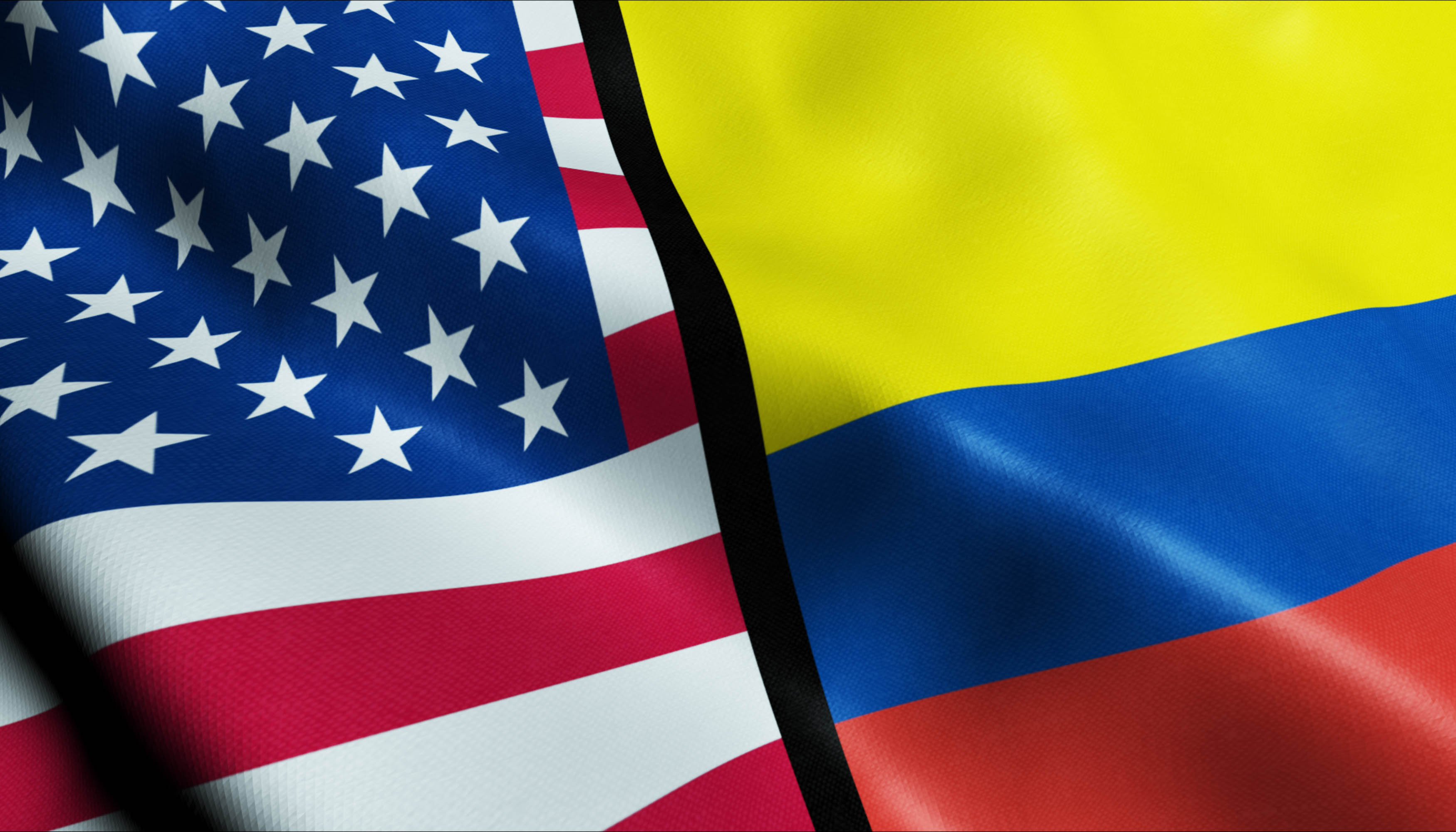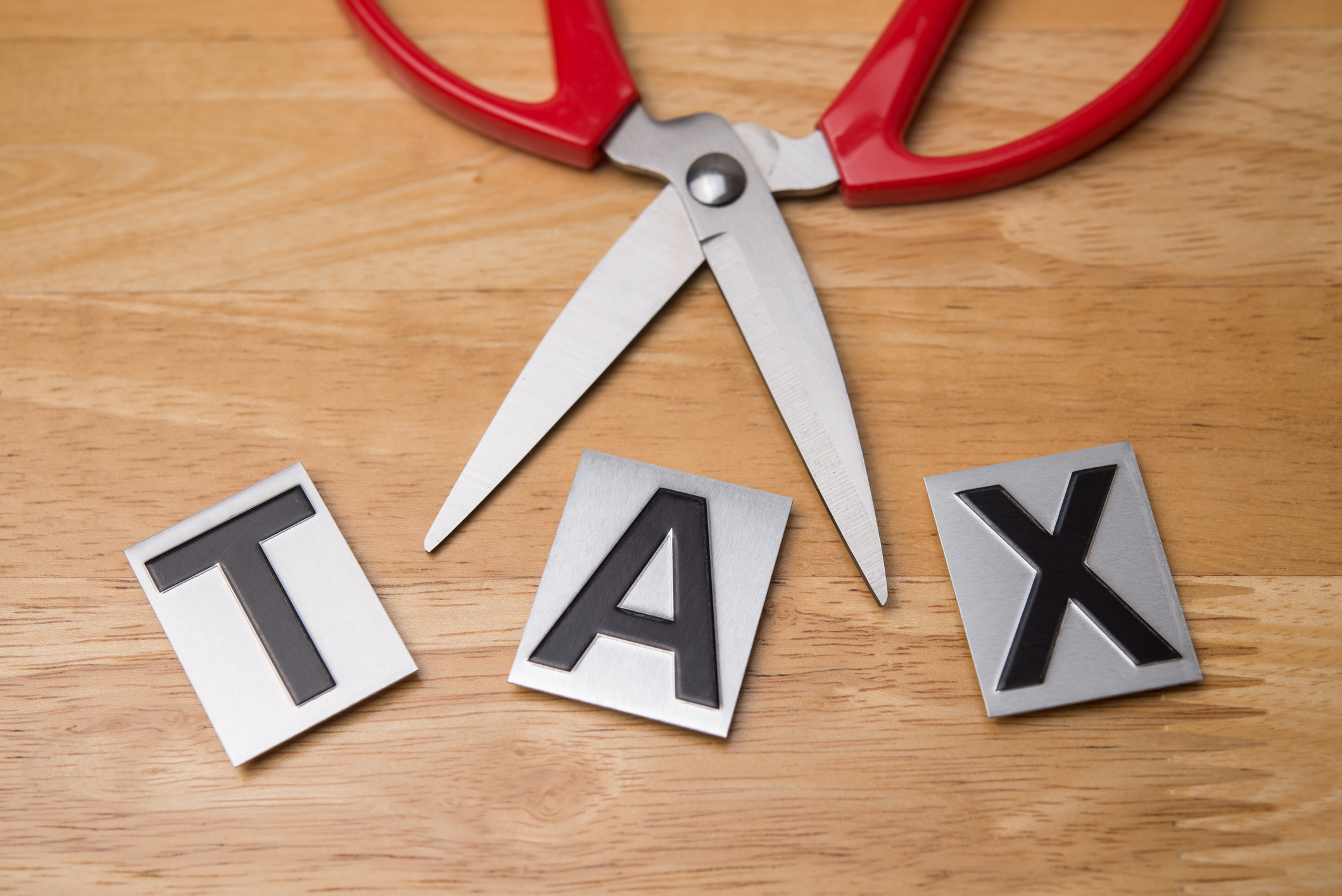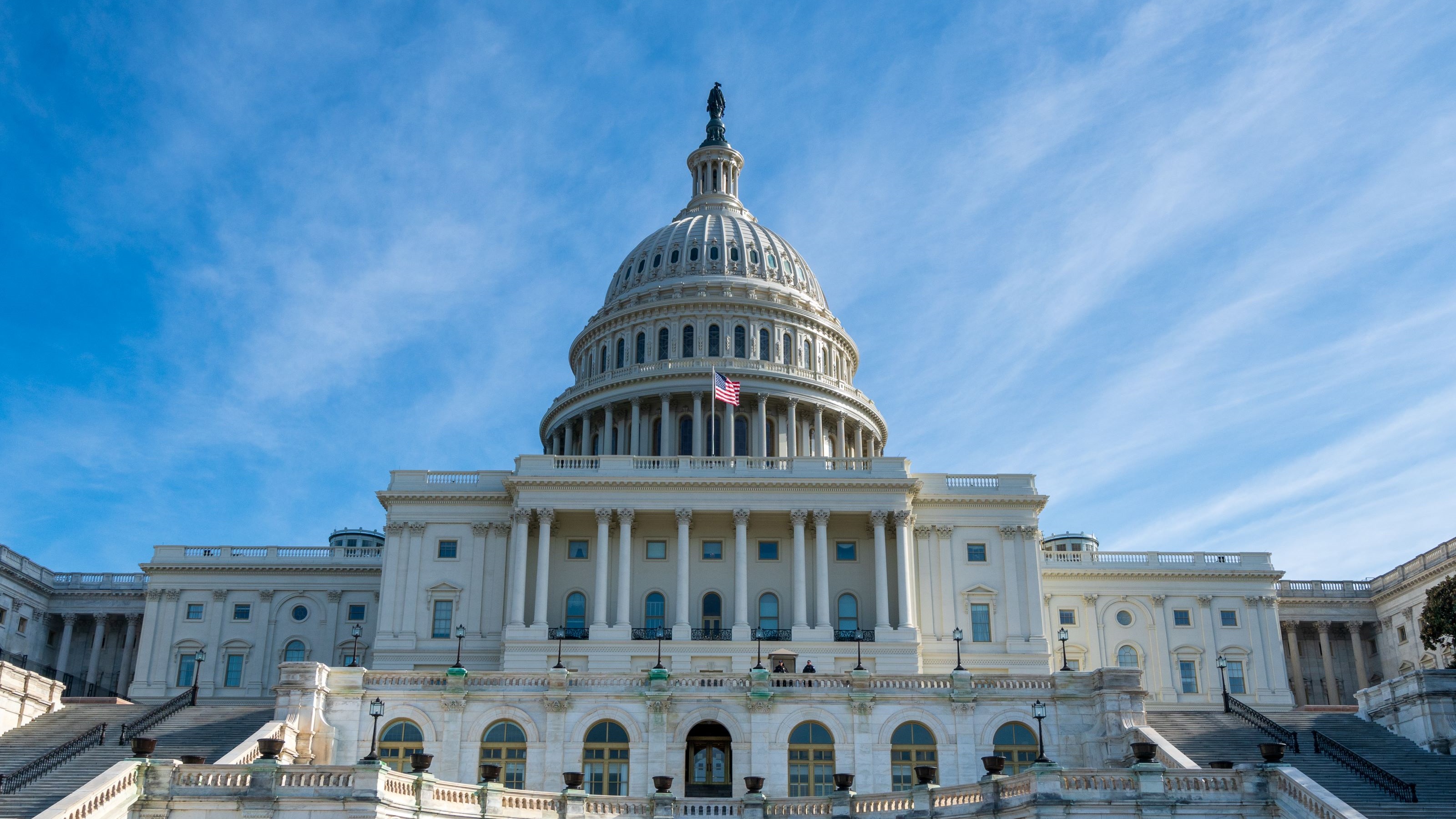Trump’s Tariff Tiff With Colombia on Hold, But Is It a Sign of What’s to Come?
The Trump administration threatened a 25% tariff on Colombia in a dispute that ended in less than a day.


President Donald Trump was on the brink of igniting a trade war with Colombia within his first week in office and it all ended in ten hours.
Trump threatened 25% tariffs on Colombian goods imported to the U.S. on Jan. 26, which would increase to 50% within a week after Colombia’s president denied the arrival of deportation flights from the United States.
That spat occurred as President Gustavo Petro of Colombia blocked two U.S. military planes carrying Colombian migrants from entering the country, calling for the dignified treatment of the people of Colombia.
From just $107.88 $24.99 for Kiplinger Personal Finance
Become a smarter, better informed investor. Subscribe from just $107.88 $24.99, plus get up to 4 Special Issues

Sign up for Kiplinger’s Free Newsletters
Profit and prosper with the best of expert advice on investing, taxes, retirement, personal finance and more - straight to your e-mail.
Profit and prosper with the best of expert advice - straight to your e-mail.
The diplomatic dispute came as Brazil’s Ministry of Foreign Affairs demanded explanations from the U.S. government for the “degrading treatment” of deportees after they arrived handcuffed. Petro requested that Colombian migrants be treated respectfully, adding that his government would welcome them on civilian planes.
Trump’s tariff threat soon escalated beyond a simple tax dispute.
The Trump administration issued a series of harsh retaliatory sanctions and penalties, including visa sanctions, a travel ban, and enhanced inspection methods for Colombian citizens entering the U.S.
Petro retaliated with 25% tariffs on U.S. goods entering Colombia, followed by a 50% hike within a week. However, the Colombian government soon yielded and came to an agreement with the U.S. to avert a devastating trade war.
Here’s a summary of what happened, and how it could have impacted your wallet. This story still developing.
What were Trump’s threats to Colombia?
President Trump narrowly avoided slipping into a trade war with Colombia, but will his blunt use of tariff threats cause trouble during his second term?
As the diplomatic dispute over the treatment of Colombian migrants unfolded on Sunday, Trump announced bold measures against Colombia on his platform Truth Social. These included:
- Emergency tariffs: Trump threatened emergency 25% tariffs on all Colombian imports to the U.S., which would escalate to 50% within a week.
- Travel ban: The U.S. State Department immediately banned travel to the United States and ordered the cancellation of visas for Colombian government officials, allies, or supporters.
- Visa sanctions were ordered on all party members, family members, and supporters of the Colombian government.
- Enhanced inspections from the U.S. Customs and Border Protection were ordered on all Colombian nationals and cargo.
- Financial penalties: The U.S. Treasury would carry out banking and financial sanctions under the International Emergency Economic Powers Act (IEEPA).
As mentioned, Colombian President Petro retaliated by threatening a 25% tariff on all U.S. goods imported to Colombia, followed by a 50% tariff after a week. Soon after, both parties reached an agreement.
What was the agreement?
White House press secretary Karoline Leavitt said that Trump’s tariff orders and sanctions would be “held in reserve and not signed” on Jan. 26, as long as Colombian migrants returned to their country. However, visa restrictions on Colombian officials and enhanced inspections would remain in place until Colombian deportees were returned.
Colombia's government asked that migrants be treated with dignity and respect.
Trump’s tariff threat sparked fears of higher gas, coffee prices
One of the largest category of imports from Colombia include crude oil, followed by coffee, and cut flowers, according to the latest data from the Observatory of Economic Complexity.
- Crude petroleum imports accounted for $6.05 billion
- Coffee imports totaled $1.78 billion
- Cut flowers comprised of $1.64 billion
Colombia is the second largest supplier of coffee after Brazil, the U.S. Department of Agriculture reported, responsible for 20% of all imports in 2024. The Associated Press reported that Colombia is the sixth-largest exporter of crude oil to the U.S.
The prices of said products would have been on the rise if Trump hadn’t gotten his way, worsening what may soon come.
Separately, the Trump administration is also considering levying 25% tariffs on Canada and Mexico as soon as Feb. 1, 2025. China would also be hit with a 10% tariff. As reported by Kiplinger, the measure will have a broad impact on your wallet.
The price of imported goods from those countries will affect the prices of cars, food, and vegetables, as well as gasoline.
Migrant flights land in Colombia
As part of the resolution between the Trump administration and the Colombian government, the migrants who had been blocked from entering Colombia on U.S. military planes were transported to two Colombian Air Force planes and delivered to Bogotá.
The two aircraft landed on January 28 and reportedly included a total of 201 Colombian citizens, 110 sent from California and 90 from Texas.
Colombian Foreign Minister Luis Gilberto Murillo said that the country would continue to welcome Colombian deportees in “dignified conditions,” the BBC reported.
U.S. officials said that visa restrictions would not be lifted until the migrants who had been turned back on Sunday landed in Colombia. However, the temporary visa restrictions appear to be still in place to date per the U.S. Embassy in Colombia website.
Bottom line: defining the role of tariffs under Trump
Tariffs along with other extraordinary restrictions may have yielded results for the Trump administration this time, but the president’s reliance on tariffs may have negative implications for the U.S. economy in the long-term.
Trump is currently considering a 25% tariff on Mexico and Canada imports to the U.S. As mentioned, tariffs are paid by domestic businesses in the United States, and the additional cost is generally passed on to U.S. consumers.
That means prices of everyday goods such as groceries, electronics, clothes, and gas can be on the rise. Though potential tariffs on Colombia are apparently on hold for now, other sanctions are still in place.
Stay tuned as any changes may impact you directly.
Related Content:
- Food, Gas Prices to Spike if Trump Levies 25% Tariffs on Canada and Mexico
- Tariffs Could Make Your Shopping Pricier in 2025
- Tariffs: What They Are and How They Impact Your Wallet
Profit and prosper with the best of Kiplinger's advice on investing, taxes, retirement, personal finance and much more. Delivered daily. Enter your email in the box and click Sign Me Up.

Gabriella Cruz-Martínez is a finance journalist with 8 years of experience covering consumer debt, economic policy, and tax.
Gabriella’s work has also appeared in Yahoo Finance, Money Magazine, The Hyde Park Herald, and the Journal Gazette & Times-Courier.
As a reporter and journalist, she enjoys writing stories that empower people from diverse backgrounds about their finances, no matter their stage in life.
-
 Stocks Chop as the Unemployment Rate Jumps: Stock Market Today
Stocks Chop as the Unemployment Rate Jumps: Stock Market TodayNovember job growth was stronger than expected, but sharp losses in October and a rising unemployment rate are worrying market participants.
-
 Should You Renew Your CD?
Should You Renew Your CD?With rate cuts impacting earnings, we examine if now is a wise time to renew CDs.
-
 7 Ways to Plan Now to Save on Medicare IRMAA Surcharges Later
7 Ways to Plan Now to Save on Medicare IRMAA Surcharges LaterUnderstand the critical two-year lookback period and why aggressive planning before you enroll in Medicare is the most effective way to minimize IRMAA.
-
 Law Reversal Looming? Trump Eyes 2026 Gambling Winnings Tax Change
Law Reversal Looming? Trump Eyes 2026 Gambling Winnings Tax ChangeTax Deductions It's no secret that the IRS is coming after your gambling winnings in 2026. But how long will that last?
-
 Trump's Plan to Eliminate Income Tax: 7 Things to Know Now
Trump's Plan to Eliminate Income Tax: 7 Things to Know NowTax Policy The potential consequences of eliminating taxes in favor of Trump tariffs could impact everything from inflation to Social Security and might give some U.S. taxpayers pause.
-
 5 Types of Gifts the IRS Won’t Tax: Even If They’re Big
5 Types of Gifts the IRS Won’t Tax: Even If They’re BigGift Tax Several categories of gifts don’t count toward annual gift tax limits. Here's what you need to know.
-
 The 'Scrooge' Strategy: How to Turn Your Old Junk Into a Tax Deduction
The 'Scrooge' Strategy: How to Turn Your Old Junk Into a Tax DeductionTax Deductions We break down the IRS rules for non-cash charitable contributions. Plus, here's a handy checklist before you donate to charity this year.
-
 IRS Says You Made a Tax Return Mistake? A New Law Could Help You Fight Back
IRS Says You Made a Tax Return Mistake? A New Law Could Help You Fight BackTax Law Updated taxpayer protections change what the IRS must explain on error notices and how long you have to respond.
-
 Is a New $25,000 Health Care Tax Deduction Coming in 2026?
Is a New $25,000 Health Care Tax Deduction Coming in 2026?Tax Policy A proposal from GOP Sen. Josh Hawley adds to the chatter about health care affordability.
-
 Costco Sues Over Trump Tariffs: What Could That Mean for Prices in 2026?
Costco Sues Over Trump Tariffs: What Could That Mean for Prices in 2026?Tariffs The retailer is making headlines not just for its famous hot dog and gold bars but for suing the Trump administration over tariffs.
-
 Social Security Benefits Quiz : Do You Know the IRS Tax Rules?
Social Security Benefits Quiz : Do You Know the IRS Tax Rules?Quiz Social Security benefits often come with confusing IRS tax rules that can trip up financially savvy retirees and near-retirees.